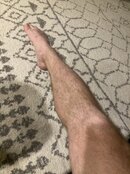Alright, i will defenitly see that I can get some footage of myself on my next dives.You should tell the DM in the second video to secure that DSMB a little better, so they don't snag on things
I think @Blackcrusader is a bit of an outlier on this. But, these videos are a perfect example of how slow a diver can go, when they really put their mind to it. @Klopo after you have some footage of yourself diving for a few minutes, compare it to Blackcrusader and his friends. If you're moving more than this, then you could move less and use less gas. And if you're not moving more than this, well... color me surprised!
Thank you





